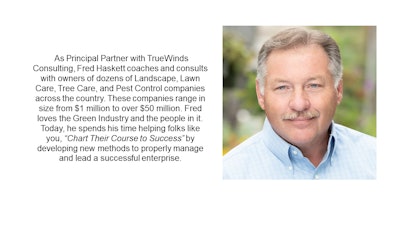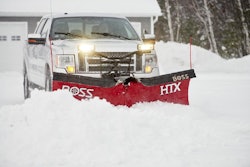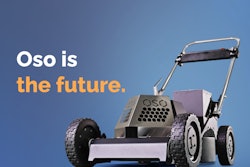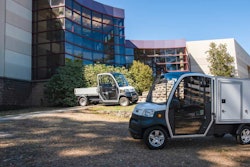
Starting a new position in the lawn care, landscaping, or tree care industries can be both exciting and daunting. Many of us have been advised that being the first to arrive and the last to leave is the key to making a positive impression. While this advice holds merit, especially during the initial stages of a job, it primarily addresses how to create a strong first impression rather than how to become an ongoing, valuable asset to your team.
Let's explore a thought-provoking concept known as the "Helpful Hierarchy," originally proposed by entrepreneur Daniel Debow. This framework offers practical advice on how employees can approach their daily tasks with a focus on adding value continuously.
"Helpful Hierarchy" de-mystified
The "Helpful Hierarchy" is a simple yet effective framework that encourages employees to approach their responsibilities in a value-added manner. It's a roadmap for transforming everyday tasks into opportunities to contribute meaningfully to the organization. Let's delve into this hierarchy to understand how it can be applied in the context of the lawn care, landscaping, and tree care industries.
Level 1: Identification of Issues At this level, an employee identifies a problem or challenge within their scope of work. For example, in a lawn care company, an employee may realize that they are understaffed for an upcoming project.
Level 2: Root Cause Analysis A Level 2 employee goes a step further by attempting to understand why the issue exists. In our example, the employee would investigate why there is a shortage of staff, perhaps discovering that the company is not actively recruiting for positions to support the new project.
Level 3: Suggesting Solutions A Level 3 employee not only identifies the problem and its root causes but also begins to formulate potential solutions. In our scenario, this employee might propose that the company initiates a job posting to attract suitable candidates.
Level 4: Providing Actionable Recommendations Taking it up a notch, a Level 4 employee not only suggests solutions but also offers concrete, actionable recommendations. In our case, they might advise posting job openings on platforms like Indeed.com and outline the steps involved.
Level 5: Taking Ownership and Initiative At the highest level, a Level 5 employee doesn't just provide recommendations but takes full ownership of implementing them. In our example, this employee would write and post job listings, review resumes, and even arrange meetings between viable candidates and the management.
The challenge in the lawn care, landscape, and tree care industries
In the world of lawn care, landscaping, and tree care businesses, it's not uncommon to find that while employees often know what needs to be done, execution can be a rare commodity. This issue permeates all levels of an organization.
However, Debow's "Helpful Hierarchy" offers a path forward. It suggests that to add genuine value, employees should consistently seek to present solutions in every situation. One practical approach is to train your mind always to consider actionable tasks you would recommend in a given scenario, based on your understanding of the situation.
This approach challenges individuals to analyze problems, develop informed opinions, and make decisions, rather than being stuck in an endless cycle of weighing pros and cons. While it's not always easy, it's a mindset that can be developed and refined over time.
The role of leadership
As leaders in the lawn care, landscaping, and tree care industries, we play a crucial role in fostering an environment that encourages Level 4 and 5 responsibilities. This often involves a level of delegation that can be uncomfortable, as Debow acknowledges.
Encouraging employees to embrace these higher levels of responsibility requires courage and judgment. It's a process that involves learning from mistakes and continuously refining one's skills. Most importantly, it's a journey that necessitates the willingness to evolve and adapt.
In conclusion, the "Helpful Hierarchy" can be a valuable tool in enhancing the performance and contribution of employees at all levels within lawn care, landscaping, and tree care businesses. By fostering a culture of continuous improvement, encouraging proactive problem-solving, and embracing the process of growth, we can create more effective, value-driven teams.
As we navigate the dynamic landscape of our industries, let us remember that the path to becoming Level 4 and 5 employees, and leaders, may be challenging, but it's a journey well worth undertaking. Continuous refinement and unwavering commitment will ultimately lead to a more resilient and successful future for our businesses.
Editor's Note: This article was written by Fred Haskett of TrueWinds Consulting.










